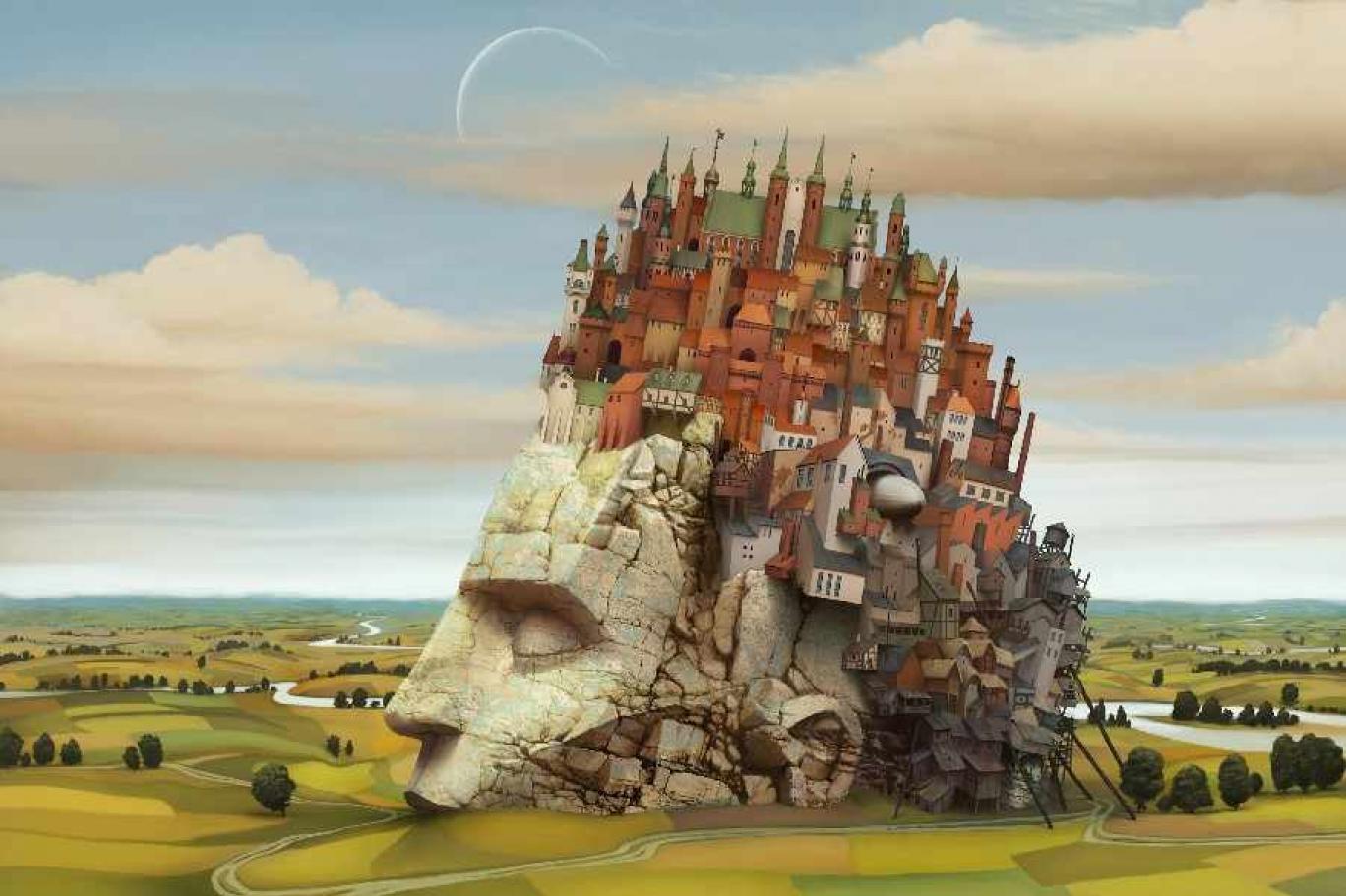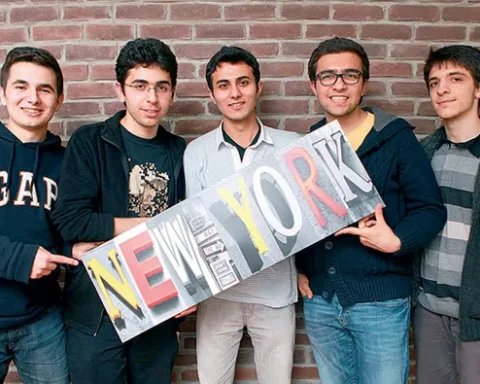Hans Vogel wonders what makes up Western Civilization. However, it is easier to state what it is not than to define it precisely.
The term Western Civilization has come to us through the educational system of the United States, where since about the mid-1900s it has been a fixture of the standard undergraduate curriculum. Basically, the term covers European history, along with some added chapters on US history. It has been instrumental in shaping the idea that the United States forms an integrated part of the Western World as its undisputed leader. Conversely, it has also given rise to erroneous notions as to the place of “Latin America” in the world. Thus it is often implicitly acknowledged that Latin America would somehow be “non-western”. The source of this idea may be easily traced to what Antonello Gerbii has called “the Dispute of the New World”, especially the points of view expressed by a number of European authors in the 18th and early 19th centuries, most notably the German philosopher Hegel. In his opinion, Latin America was not a part of history, because it was too strongly dominated by the Roman Catholic Church. It only had “geography” (an endless repetitive cycle of similar events), whereas the US could someday be expected to enter history, on account of it being a protestant nation with free speech. Whatever the validity of this point of view, the fact remains that, even with the inclusion of US history into Western History, the latter fundamentally remains the history of Europe, reputedly spanning some two and a half millenniums. Only very briefly does the US come into the picture. The US deserves mention for the significance of the “American Revolution” of 1776, while the US has clearly been playing a dominant rôle in world affairs from 1941 to the beginning of the 21st century.
After in the late 1980s Francis Fukuyama announced that history had come to an end, it is becoming increasingly clear that he was wrong and that the 21st century is going to be the “Asian Century”. This merely reinforces the notion that the inclusion of the US into Western Civilization is at best a fleeting one, to which should be added the fundamental question of whether the US is to be considered part of that civilization at all. It can be convincingly argued that the US is not a part of Western Civilization since unlike the rest of the world, it was not affected by the French Revolution of 1789 and the process of overall modernization of the Western World that resulted from it. From whatever direction one looks at it, to a large extent the modern world is the product of Western Civilization, which itself has been decisively and profoundly influenced by the French Revolution.
It is precisely the French Revolution that defines the West today and according to this view, Latin America and most of the rest of the world have been clearly affected by it. As a matter of fact, of all the countries in the world, only the US is unaffected by the French Revolution and what is more, it wholeheartedly has been rejecting all of its tenets ever since the end of the 18th century, as argued by Jean-Philippe Immarigeon.ii Proof abounds: unlike Western Europe and Latin America, the US does not have, nor has it ever had a parliamentary government, it has never had a socialist party participating in national politics, it has no Christian Democratic party, and no radical (anticlerical) party, to name just a few significant characteristics. The most significant difference with the rest of the West is perhaps the fact that the US can actually be a considered a theocracy. It is not a “democracy” but a presidential republic, with the president as a kind of elected monarch. While its political system is officially secular (church and state are separated), in fact no politician can afford to claim he is an atheist or a non-believer. Public affirmation of faith by candidates running for public office is almost a prerequisite for eligibility. Moreover it has become a requirement for everyone in politics to show full, unconditional support for the state of Israel. Simply put, there is no country in the west where such is the case. Thus, on the basis of these easily verifiable characteristics of public and political life, the US cannot be regarded as part of western civilization, at least not of western civilization as it has developed since the French Revolution.
What we see in the US today is a throwback to a period before 1789. After all, the French Revolution put a definitive end to the close-knit relationship between Church and State in the West. It was the final achievement of a historical process that had begun in the Middle Ages. Since then, all over Western Europe, Church and State had been drifting apart, with only brief exceptions of theocratic regimes (Oliver Cromwell in England from 1653 to 1658, John Calvin in Geneva from 1546 to 1564, Girolamo Savonarola in Florence from 1494 to 1498).
It is not easy to define in a few words the essence of “Western Civilization”. When asked to do so, many would answer today that it is “democracy,” whose roots are to be traced back to the ancient Greeks. Yet democracy has always been an exception in Western Civilization, since it has only functioned in Athens during a few hundred years and intermittently in Western Europe for a few decades between the 1930s and 1992. As a matter of fact, democracy has always been quite elusive, actually impossible to realize. It might be better to define Western Civilization as a society where debate may be open and where the search for an objective, verifiable truth is sometimes encouraged. For all their vagueness, these traits may actually be far more closer to the essence of the “West” than anything else. Western Civilization is not more humane or more peaceful than other civilizations, quite the contrary.
Ever since the Crusades, Europe has been a net exporter of violence. Actually, European history is characterized by an unusual degree of competitiveness, deceit, aggression and violence, to an extent not often encountered beyond the confines of Europe. Yet on the other hand, European history has also been shaped by the Roman Catholic Church. There is probably no other single institution that better represents the essence of Western Civilization than the Church. One may even sustain that the history of the Church IS the history of the West. To be sure, this question is open to debate. Whatever the real underlying reasons of the division of Christianity in the Roman Catholic Church and the realm of Orthodoxy, it is obvious that it constitutes also a cultural dividing line. However it may not be such a profound border as to prevent contemporary Russia to reshape itself in a true bastion of Western Civilization and eternal cultural values that have been traditionally associated with the West.
Friedrich Nietzsche regarded the Greeks as the epitome of European (Western) civilization. It was only by means of a protracted and tenacious struggle that the Roman Catholic Church, with its teachings allegedly derived from the Jews, and with its avowed penchant for protecting the weak and the meek, had finally been able to subdue the virile and superior legacy of the Greeks.
Western Civilization is also characterized by its outward appearances and manifestations, notably the visual arts and music. These may be regarded as the crowning, most sublime and lasting achievement of the West. Both European music and the visual arts had their apogee in the period 1500-1900, when an unusually high number of exceptionally gifted artists carried the arts to levels of creativity and profoundness of expression never seen before. The age of artistic creativity coincides with the extraordinary political, social and economic development of Western Europe. It has come to an end in the first half of the 20th century, when Europe’s leading powers destroyed each other and themselves in a long drawn out process of war and revolution beginning in 1914 and ending in 1945. This process of collective cultural suicide has been nurtured partly by the United States, which is also the main beneficiary of the events as they unfolded. The expansion and development of the US would have been impossible without the massive contributions from Europeans. But after 1945, Western Civilization is really dead and lives on only in rigid, strictly codified form, without any genuine contributions that might take it further. Obviously, Western Civilization, like others before it, is subject to natural cycles of growth and decay.
Some have sought to provide some sort of ethnic, or racial definition to Western Civilization. On the basis of linguistic research from the 18th century, Europe has been equated with Indo-European languages, a linguistic family stretching from the Atlantic to the Indian Ocean, and comprising Germanic, Celtic, Latin, Slavic, Iranian and Indian languages. There being no natural relationship between language and race, the basis of this way of thinking is flimsy to say the least. Yet there is something to be said for it, since what we call Western Civilization has allegedly begun with the irruption into Europe of the Greeks, a warlike branch of the “Indo-Europeans”. Nazis and other ideologies of the far right have always been attracted to the racial theory of European civilization, but since the defeat of Nazism in 1945, this way of thinking has been marginalized, only to make a powerful comeback lately as the logical answer to the millions of non-European, anti-Christian settlers flocking to Europe’s great historic cities. Today, this nativist European stance is gaining increasing numbers of often youthful supporters. Under the motto of “Remigration” they are demanding the return of all those non-European newcomers that, apart from certain ways of preparing food, have little to add to Europe’s culture and civilization.
Western Civilization is to be regarded as the history of Europe, especially the Western part of it. This history spans almost 3,000 years, beginning in ancient Greece and ending perhaps in the present day and age. European history is subject to a well-established periodization, falling apart in four major periods:
- Antiquity (800 BC-500 AD)
- the Middle Ages (500-1500 AD)
- the Modern Age (1500-1789)
- the Contemporary Period.
Antiquity is often divided into a) Classical Antiquity (800 BC-200 AD) and b) Late Antiquity (200-500 AD); the Middle Ages into a) Early Middle Ages (500-1000 AD), b) High Middle Ages (1000-1200 AD) and c) Late Middle Ages (1200-1500 AD). The Modern Age is broken down into the Renaissance or Early Modern period (until about 1700) and the “Age of the Enlightenment”, from about 1700 to 1789. The Contemporary period is usually divided in the 19th century (either a long one from 1789 to 1914 or a short one from 1815 to 1914), and the 20th century (“long” from 1914 to 2001, the destruction on three WTC buildings in New York, or “short” from 1914 to 1989, the fall of the Berlin Wall).
This chronology and the ensuing periodization are generally accepted. However, serious doubts about their validity are more than justified. The problem is that adapting the chronology by incorporating these points of view would upset just too many narratives and cause unforeseen complications. Russian mathematician Anatoli Fomenkoiii sustains that the birth of Christ, the starting point for the current chronology, took place one thousand years later than currently assumed. Swiss historian Christoph Pfisteriv argues that history is even shorter, beginning somewhere in the “17th” century. There resides an undoubted advantage for the US in accepting profound adaptations of the accepted chronology, because it would considerably increase its relative importance in terms of years of existence. For instance, if Pfister is right, the US would be about as old as Western Europe, which in itself would prove an advantage in restructuring US-European relations.
Serious doubts about the true origins of Christianity and its relationship with Islam and Judaism are also justified, on the basis of research by Edwin Johnsonv, François de Sarrevi and Ignacio Olagüevii. It is doubtful that Judaism was the first major monotheistic religion and that the Holy Bible is based on Jewish documents. In this respect, following the research by Shlomo Sand,viii the idea that there ever was a Jewish diaspora or that the Jews descend from somewhere in Palestine, is also untenable.
As for the geographical spread of Western Civilization, it is to found today in those areas of Europe that have not been too much affected by US cultural influence and mass immigration from Africa, the Middle East and Western Asia. At first sight, most people today would probably consider Israel a Western state and they might be right on many accounts, given the backgrounds of most Jewish settlers. However, “church” and state in Israel are not separated. In order to enjoy full citizenship, one has to be Jewish. In fact, Israel is a theocracy like the US and as such not to be regarded as part of Western Civilization.
Western Civilization today is probably most firmly entrenched in Russia, but also in areas in Latin America where European immigrants have concentrated: Argentina, Uruguay and the three southernmost states of Brazil. Small pockets of Western Civilization are further to be found in the English speaking world: the US, Canada, Australia, New Zealand and South Africa.
Notlar
i Antonello Gerbi, The Dispute of the New World. The History of a Polemic, 1750-1900, Pittsburgh: University of Pittsburgh Press, 1973.
ii Jean-Philippe Immarigeon, American Parano. Pourquoi la vieille Amérique va perdre sa guerre contre le reste du monde, Paris: Bourrin, 2006.
iii Anatoli Fomenko et al., History: Fiction or Science? 4 vols., Paris, London, New York: Delamere Publishing, 2003-2007.
iv Christoph Pfister, Die Matrix der alten Geschichte. Eine Einfuehrung in die Geschichts- und Chronologiekritik, Norderstedt: Books on demand, 2021.
v Edwin Johnson, The Rise of Christendom, London: Kegan Paul, Trench, Trübner & co., 1890.
vi François de Sarre, Mais où est donc passé le moyen âge? Le récentisme, Ethos eds., 2013.
vii Ignacio Olagüe, La revolución islámica en Occidente, first edition, 1974.
viii Shlomo Sand, The Invention of the Jewish People, London: Verso, 2009.






